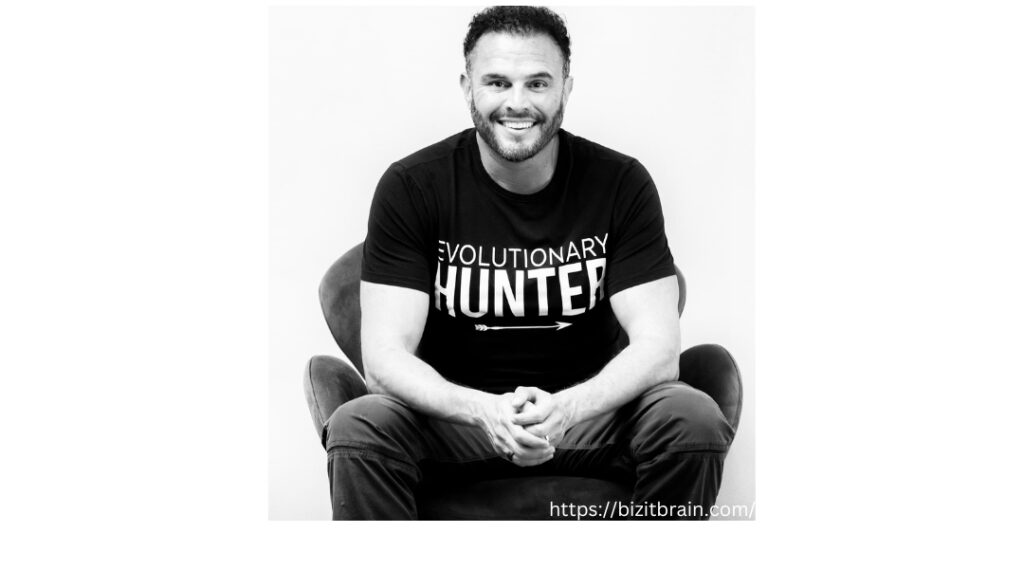
- Introduction
The business landscape is constantly evolving, and the future holds immense potential for those ready to embrace change. Yet, many organizations find themselves bogged down by operational inefficiencies that prevent them from reaching their full potential. What if you could tackle these issues today to pave the way for a smoother tomorrow?
Into Strategies Inspired
This blog delves into strategies inspired by Alex Charfen’s innovative approach, focusing on how to identify and eliminate operational drag. Get ready to uncover practical methods that not only enhance your efficiency but also position your business for sustainable growth in an ever-competitive market.
1.1 What is the Focus of the Blog Article?
This blog article focuses on preparing businesses for the future by addressing operational inefficiencies today. By understanding how these inefficiencies manifest, organizations can take proactive steps to streamline their operations.
Strategies Developed
We will delve into strategies developed by Alex Charfen that are designed to combat what he terms “operational drag.” These methods not only enhance productivity but also create a more agile business environment capable of adapting to tomorrow’s challenges.
1.2 Preview of the Strategies for Operational Inefficiencies
Addressing operational inefficiencies is crucial for businesses aiming to thrive in a competitive landscape. By exploring specific strategies, organizations can effectively reduce waste and enhance productivity.
Involves Identifying Key
One approach involves identifying key areas where processes may be slowing down. Another strategy focuses on the adoption of innovative technologies that streamline workflows. These targeted methods empower teams to optimize their operations and position themselves favorably for future challenges.
Understanding Operational Inefficiencies
Operational inefficiencies can hinder a business’s growth and productivity. They create what’s known as operational drag, which slows down processes and creates unnecessary obstacles.
Organization Aiming
Identifying these inefficiencies is crucial for any organization aiming to thrive. By understanding where bottlenecks occur, businesses can begin to streamline their operations effectively. This understanding not only enhances overall performance but also fosters a culture of continuous improvement within the team.
Exploring the Concept of Operational Drag
These can stem from outdated systems, poor communication, or unnecessary steps in workflows. When teams encounter operational drag, their productivity suffers.
Essential for Improvement
Identifying these bottlenecks is essential for improvement. By recognizing what hinders progress, businesses can take proactive measures to streamline operations. Addressing operational drag not only enhances efficiency but also fosters a more agile and responsive organizational culture. This shift opens doors to new opportunities and greater success.
Impact of Operational Inefficiencies on Businesses
Operational inefficiencies can have a significant ripple effect on businesses. They often lead to wasted resources, increased costs, and reduced employee morale. When processes are sluggish or cumbersome, it hampers productivity and creativity.
Customers May Face Delays
Moreover, customers may face delays or poor service quality. Operational drag not only affects the bottom line but also stifles growth potential in an increasingly competitive landscape. Addressing these issues is crucial for long-term sustainability and success.
Strategies by Alex Charfen
Alex Charfen’s methods focus on identifying and eliminating operational drag. He emphasizes the importance of creating streamlined processes that enhance productivity. By addressing inefficiencies head-on, organizations can position themselves for future success.
Implementing These Strategies
Implementing these strategies involves assessing current workflows and pinpointing bottlenecks. Charfen advocates for a proactive approach to problem-solving, encouraging teams to embrace continuous improvement as part of their culture. This mindset not only cultivates efficiency but also fosters innovation across the organization, paving the way for sustainable growth.
3.1 Overview of Alex Charfen’s Methods
He emphasizes the need for clarity in processes, ensuring that every team member understands their roles and responsibilities.
Continuous Improvement
Charfen advocates for continuous improvement through regular assessments of operational practices. By fostering a culture of feedback and adaptability, businesses can quickly respond to challenges. His approach encourages leaders to embrace change as an opportunity rather than a setback, ultimately driving growth and efficiency.
3.2 How These Strategies Help Reduce Operational Inefficiencies
By streamlining processes, businesses can improve communication and collaboration among teams. This creates a more cohesive work environment where everyone understands their roles.
Accountability and Transparency
Additionally, these methods emphasize accountability and transparency. When employees know what’s expected of them and see the bigger picture, they are empowered to make better decisions. The result is a significant reduction in wasted time and resources, leading to enhanced productivity across all levels of the organization.
- Implementation Tips
Start small by identifying key areas where operational drag is most evident. Engage your team in brainstorming sessions to foster a culture of innovation and ownership.
Measurable Goals
Next, create a clear action plan with measurable goals. Celebrate wins, no matter how minor they may seem, as this will encourage continued engagement and commitment from everyone involved in the process of streamlining operations.
Practical Steps to Implement Alex Charfen’s Strategies
Start by assessing your current operations. Identify specific areas where inefficiencies occur. This may involve gathering feedback from employees or analyzing workflow processes. Use tools like flowcharts to visualize these pain points.
Charfen’s Strategies
Next, take small steps towards implementing Charfen’s strategies. Prioritize the most pressing issues and set achievable goals for improvement. Encourage open communication within teams to foster a culture of collaboration and innovation as you make changes. Regularly review progress and adjust tactics as necessary to ensure lasting impact on operational efficiency.
Case Studies of Successful Implementations
One notable case is a mid-sized tech firm that adopted Alex Charfen’s strategies. By identifying their operational drag, they streamlined project management processes. This led to a 30% increase in productivity within six months.
Manufacturing Company
Another example involves a manufacturing company that implemented these methods to enhance supply chain efficiency. They reduced lead times significantly and improved customer satisfaction ratings. These real-world applications demonstrate the potential of addressing operational inefficiencies effectively through proven tactics.
Additional Benefits
Streamlining operations goes beyond just efficiency. Improved workflows can lead to higher employee morale as teams feel less overwhelmed by unnecessary tasks. A positive work environment boosts productivity and creativity.
Embrace Efficient Practices
Additionally, businesses that embrace efficient practices often see enhanced customer satisfaction. When processes run smoothly, products or services are delivered faster and with better quality. This leads to stronger brand loyalty and repeat business, giving companies a competitive edge in the market.
Beyond Efficiency: Other Advantages of Streamlining Operations
Streamlining operations goes beyond just improving efficiency. It fosters a culture of innovation within the organization. When processes are simplified, employees can focus on creativity and problem-solving rather than getting bogged down in tedious tasks.
Optimized Operations Enhance
Additionally, optimized operations enhance customer satisfaction. Faster response times and improved service quality lead to happier clients who are more likely to return. By addressing operational inefficiencies today, businesses set themselves up for long-term success while creating a positive experience for their customers and teams alike.
Conclusion
Addressing operational inefficiencies is crucial for businesses aiming to thrive in an ever-evolving landscape. By adopting efficient practices, organizations can streamline processes and enhance productivity.
Operational Drag Paves
Embracing Alex Charfen’s insights on operational drag paves the way for a more adaptive future. Companies that prioritize efficiency today will find themselves better equipped to tackle tomorrow’s challenges with confidence and agility. The path forward is clear: invest in improvement now, and reap the benefits later.
Importance of Addressing Operational Inefficiencies
Addressing operational inefficiencies is crucial for any business aiming to thrive in a competitive landscape. These inefficiencies can drain resources, stifle growth, and impact employee morale. Identifying and rectifying these issues paves the way for smoother processes.
Organizations Commit
When organizations commit to tackling operational drag, they unlock potential that may have been previously overlooked. This not only boosts productivity but also enhances customer satisfaction and loyalty. A proactive approach today sets the foundation for a more efficient tomorrow.
Encouraging Businesses to Embrace Efficient Practices
Addressing operational inefficiencies is essential for any business wanting to thrive in the future. By understanding and applying effective strategies, companies can significantly reduce operational drag. Embracing efficiency not only enhances productivity but also fosters a culture of continuous improvement.
This proactive approach encourages innovation and adaptability within teams. As businesses tackle their inefficiencies, they create room for growth and evolution.
By investing time in these practices today, organizations can pave the way for tomorrow’s success. It’s about more than just surviving; it’s about thriving in an ever-changing landscape.



